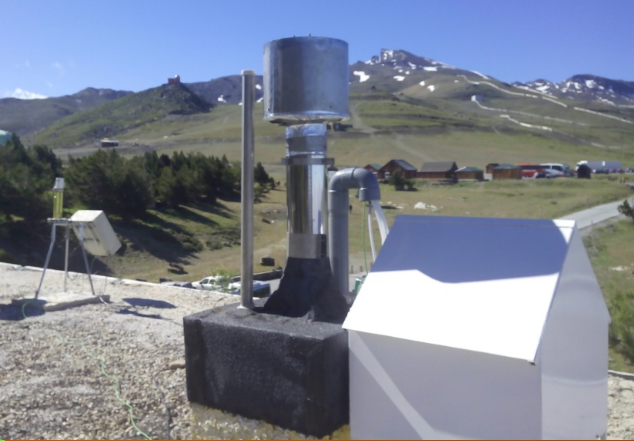
Project data:
- Ref. RTI2018-101154-A-I00
- Realization: 1/1/2019 a 30/09/2022
- Funding Agency: Ministerio de Ciencia e Innovación. MICINN
- Principal Investigator: Gloria Titos Vela.
- Researchs: Paloma Cariñanos, Daniel Pérez-Ramírez
- Work team: Alberto Cazorla, Andrea Casans, Fernando Rejano, Jesús Abril, Elisabeth Andrews, Soledad Ruíz, Juan Andrés Casquero
Abstract
Cloud droplets are formed by activation of a subset of aerosol particles called cloud condensation nuclei (CCN), which affect the properties of clouds. To date, radiative forcing through aerosol cloud interactions (ACI) constitutes the least understood anthropogenic influence on climate. One of the leading causes of this uncertainty is a lack of a broad knowledge of particle sources and how particles evolve to become effective CCN. Cloud condensation nuclei are emitted to the atmosphere directly from both anthropogenic and biogenic sources, and over 50% of CCN are formed by condensation growth of smaller particles. These smaller particles may originate from atmospheric new particle formation (NPF), anthropogenic combustion or other emissions. Biogenic volatile organic compounds (BVOCs) play an important role in the growth of newly formed particles. Additionally, several primary biological aerosol particles (PBAPs) such as pollen and pollen fragments have been identified as potential CCN. However the exact contribution of PBAPs and NPF to CCN concentrations is still unknown. Hence, the cutting-edge nature of BioCloud proposal relies on the very limited knowledge about the interactions between aerosols from biogenic origin and clouds.
The general objective of BioCloud is to determine the role of biogenic emissions on cloud formation. To address this ground-breaking challenge, BioCloud will tackle the problem from an experimental point of view using state-of-the-art instrumentation. Long-term measurements of CCN concentration, activation diameter, particle number concentration, NPF events and precursors gases, primary biological particles characterization and aerosol chemical composition will be performed in Sierra Nevada, a natural laboratory at 2580 m as for aerosols and cloud research. BioCloud will allow a major breakthrough in our understanding of the impact of biogenic emissions on clouds and climate